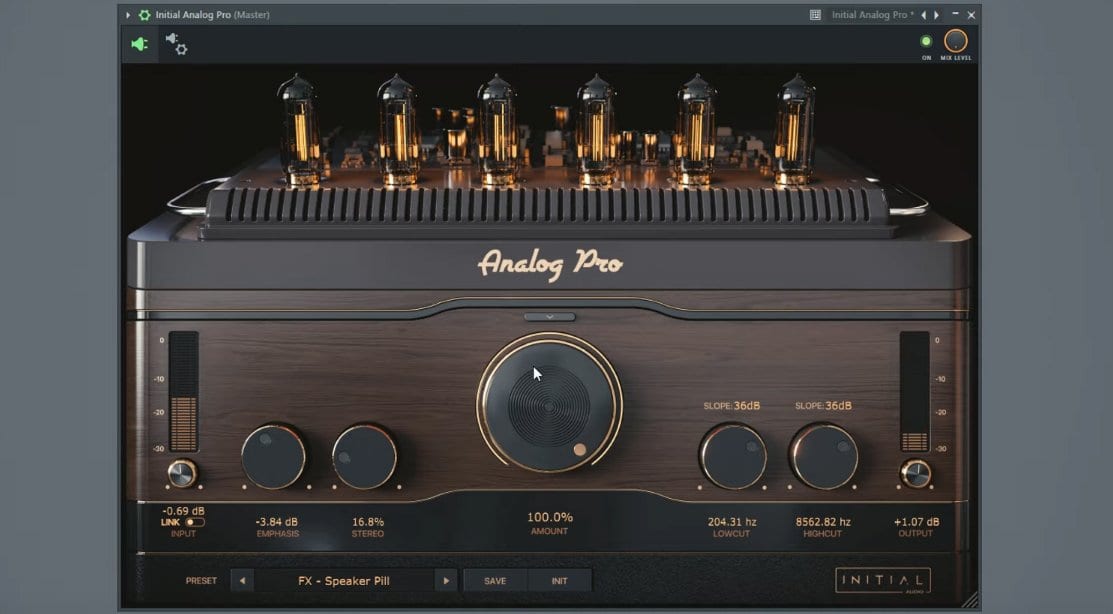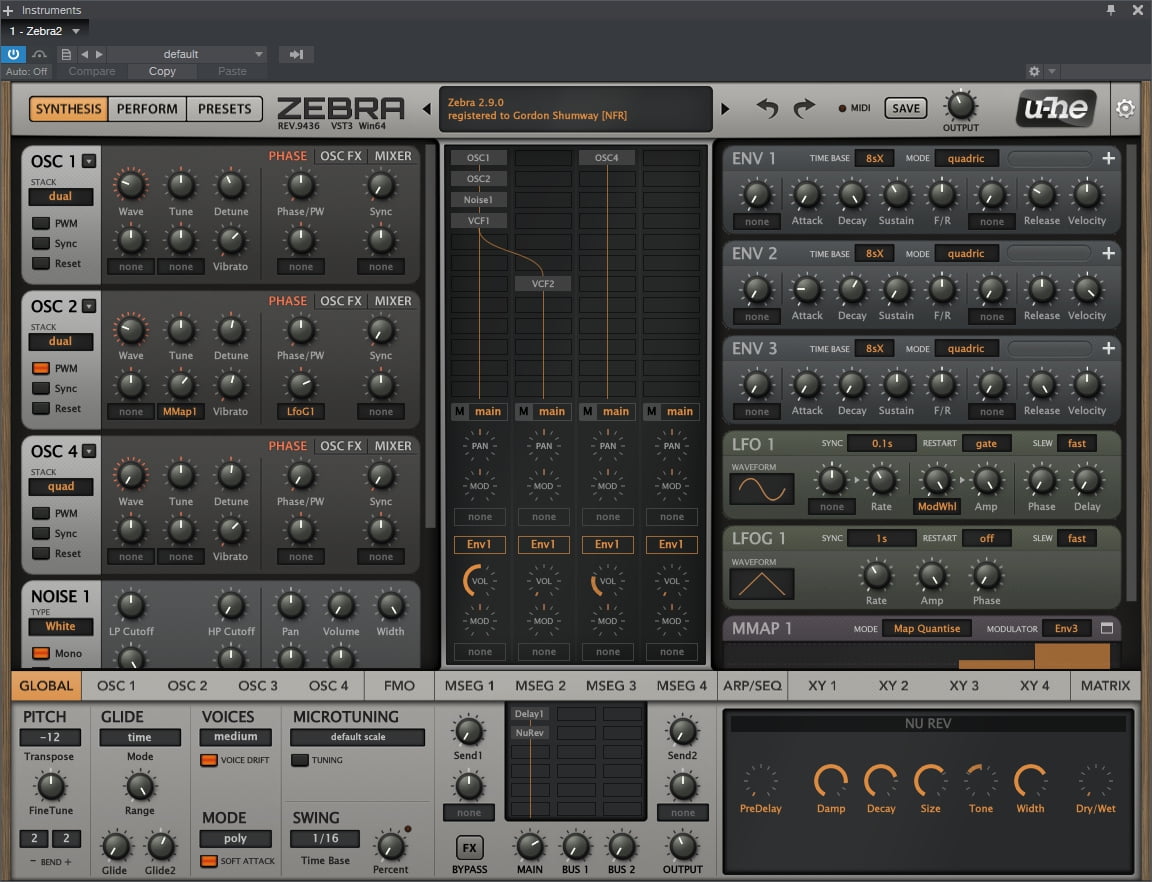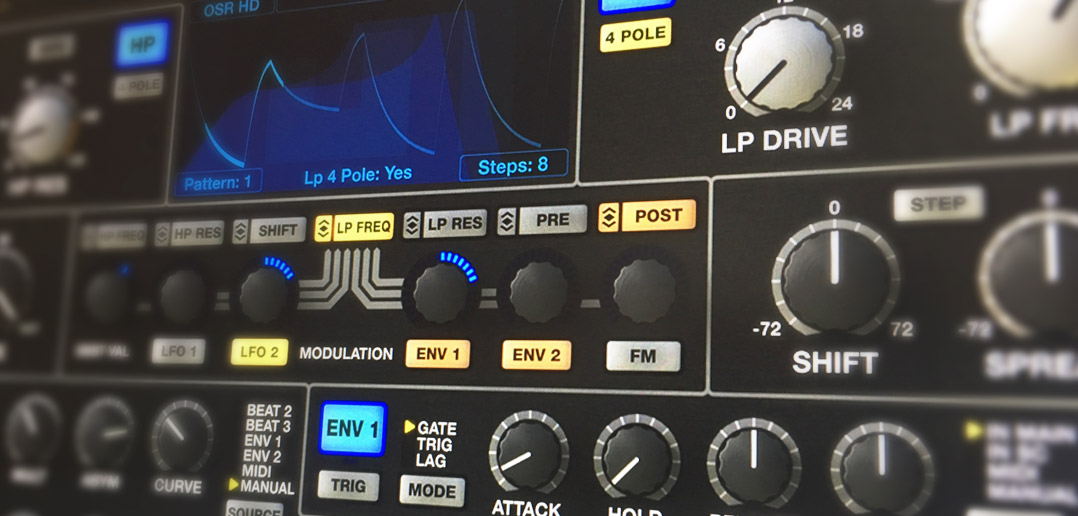
Search for best VST Instruments Plugins with many presets for Ableton, FL Studio, Cubase. Here you can find guitar, piano, saxaphone and other kind of plugins.
Lots of people are obsessed with the ‘warmth’ of analog studio gear. Sure—it sounds fuller, more human, more present.

But these days, modeling technology has become really good at simulating the effects of analog circuitry. Our computers and DAW apps are powerful enough to handle these VST workhorses.
So forget about spending tons of money on analog gear.
Here’s 7 VSTs (for both PC and Mac) that will give you that sweet analog warmth.
- SGA1566 Tube Preamp
- TDR Slick EQ
- Ace Amp
- Molot Compressor
- Voxengo Tube Amp
- MJUC jr. Compressor
- Softube Saturation Knob
What’s all the analog fuss about?
Ok, so what does analog circuitry do to your sound? What’s everyone so obsessed about?
What people like about analog sound are the quirks and imperfections.
So when people talk about ‘warm analog sound’ they’re referring to:
Internal Plugin Processing Speed Vst U-he Diva 96 Khz 120
- Subtle distortion and drive
- Harmonic distortion
- Tape Saturation
- Vacuum tubes
- Preamps
What these processes do to your sound is often hardly noticeable. That’s what the magic’s about—you won’t hear them, but they’ll make a huge difference in how your track sounds and feels.
The cumulative effect of analog processes is what people are gushing about.
1. SGA1566 Tube Preamp
Shattered Glass Audio’s SGA 1566 gives you a single channel vintage tube preamp. The whole circuit is simulated in real time to get you that authentic analog sound.
Use the SGA 1566 as a saturation compressor to boost the warmth of your track. Or add a bit of grit with the tube overdrive.
The newest version is also lighter on your CPU––so no computer freak outs!!
The main features include four state-of-the-art multimode filters with up to 10 different characteristics, highly flexible routing and almost endless modulation options with up to 16x XLFOs, envelope generators, envelope followers and midi triggers. Four state-of-the-art multi-mode filters, with panning, delay and more than 10 unique characteristics. . Let’s find more below! Volcano vst plugin download.
Download the SGA 1566 for free here.
2. TDR Slick EQ
“This little guy sounds amazing” –Dave Pensado
The TDR Slick EQ is a sleek easy-to-use three-band EQ that gives you amazing sound—like all Tokyo Dawn Records plugins.
Warm up your sound by choosing a non-linear option under Output Stage. That’ll add subtle harmonic distortion and texture.
Download the TDR SlickEQ for free here.

3. Ace Amp
Ace Amp—another Shattered Glass Audio creation—is based on classic 1950s style tube amps.
Control the input, volume, feedback, output. Choose between three resampling options.
Internal Plugin Processing Speed Vst U-he Diva 96 Khz Frequency
This amp plugin has simple controls and doesn’t eat up your CPU.
Hot Tip: Try it on vocals for a cool aesthetic effect.
Download the Ace for free here.
4. Molot Compressor
Vladg’s Molot is a compressor with character. Even the vintage Soviet look is on point.
It is best suited for non-percussive sounds like synths, vocals, piano, and pad sounds. In the EQ-section you can control the low, mid, and high range coloring of the sound.The OldSkoolVerb plugin can emulate a variety of different reverbs ranging from plate to hall reverb. The new Oldskool reverb from Voxengo offers predelay, width, time, and damping of the reverb. Free natural revurb vst. Reverb with a clear spatial image:A freeware VST plugin with a good overall sound quality and a clear spatial image.
Molot will give your sound interesting color. I recommend reading the manual to learn how to tune it properly—it’s worth the read.
This is one plug-in that is mostly in use for Linux based machines. The full form of. Free vinyl vst plugin. Audacity is a free, easy-to-use and multilingual audio editor and recorder for Windows, Mac OS X, GNU/Linux and other operating systems. Audacity can record live audio through a microphone or mixer, or digitize recordings from cassette tapes, vinyl records, or minidiscs. With some sound cards, it can also capture streaming audio. Learn how to use the free iZotope Vinyl plug-in for genres like hip-hop, pop, electronic, and rock. Read More Lo-fi: A Hip-Hop Story Nov 19, 2020. In this article we explore the history, technology, and music that inspired the newly-refreshed Vinyl plug-in’s Lo-fi feature, and hear from two of its developers firsthand. Audacity can load VST effects (but not VST instruments) on all operating systems. The VST Enabler is no longer required. Install the VST effects to the Audacity Plug-Ins folder on Windows, to /Library/Application Support/audacity/Plug-Ins on OS X/macOS or to system locations.
Download Molot for free here.
5. Voxengo Tube Amp
Voxengo’s Tube Amp gives you warm overdrive, fuzzy distortion and everything in between.
It imitates tube overdrive in the style of single-tube mic preamps.
Hot Tip: Use the low-pass filter to imitate the texture of lower-quality tubes.
Download Voxengo’s Tube Amp for free here.
6. MJUC jr. Compressor
Klanghelm’s MJUC jr. compressor is simple and elegant.
Use it for smooth compression or a heavier pumping effect. MJUC jr. is based on vintage compressors of the 1960s––it even looks like one.
Flip the ‘Time Constants’ switch to choose between slow, fast and auto. This changes the attack and release time. It affects other parts of the circuitry too, giving you interesting analog-style saturation.
Download the MJUC jr. for free here.
7. Softube Saturation Knob
This Saturation Knob is one the best free analog emulation plugins out there. Even Dave Pensado gives it two thumbs up!
Use it anywhere to add some character and distortion. Drag it on your vocal track to add shimmer.
The great thing about this one is how simple it is: literally one knob and a switch. Change the switch setting to choose between the kind of distortion you’ll get.
Download the Softube Saturation Knob for free here.
Fake It Till Ya Make It
These effects are the missing ingredient in your digital sound.
The key with analog emulation is to avoid overdoing it. Vst plugin organiser. Bring in the effect until you hear it, then dial it back a notch. It’ll still make a huge difference. Your sound will be fuller and warmer.
Use these plugins and people will be asking for your studio secrets in no time.
Make sure to grab the whole LANDR-approved free VST plugin collection:
Welcome! In this tutorial series we will be learning how to create audio plugins that run as VST, VST3, AU, RTAS, AAX or as a standalone application.
Internal Plugin Processing Speed Vst U-he Diva 96 Khz 96
Audio plugins are programs that are loaded into a host software (such as Ableton Live, Logic or REAPER). They process Audio and/or MIDI data and can have a graphical user interface. Here are three examples (U-He Zebra, Sonalksis FreeG and D16 Decimort):
As you can see, the GUI usually contains some controls (the knob being the most common) that change how the plugin processes incoming data. A plugin has presets (in the screenshot they’re called Combo and Emulator) that store all knob positions and other values.
We’ll start with a simple distortion plugin. After that, we’ll create this subtractive synthesizer plugin step by step:
We will use C++ and the WDL-OL library. It is based on Cockos WDL (pronounced whittle). It basically does a lot of work for us, most importantly:
- Ready-made Xcode / Visual Studio Projects
- Create VST, AudioUnit, VST3 and RTAS formats from one codebase: Just choose the plugin format and click run!
- Create 32/64-Bit executables
- Make your plugin run as a standalone Win/Mac application
- Most GUI controls used in audio plugins
It also gives you most GUI controls used in audio plugins, and some commonly used audio algorithms like for example resampling. This forum thread has screenshots of a lot of plugins that were done using WDL.
The different plugin formats all do more or less the same, so normally there would be a lot of copy & paste in your code. As a programmer you want to stay DRY, so sooner or later you’d write an abstraction layer over the different formats. This work has already been done in the form of IPlug, which is a part of WDL. These are the annoying parts of audio plugin development, so we can now focus on the fun stuff, such as:
- How the plugin processes incoming Audio/MIDI
- What the plugin looks like
- How it integrates with the host (automation, presets, etc.)
Another good thing about WDL is its permissive license: You can use it freely for commercial applications. See the links above for details.
How we will do this
The chase is better than the catch.